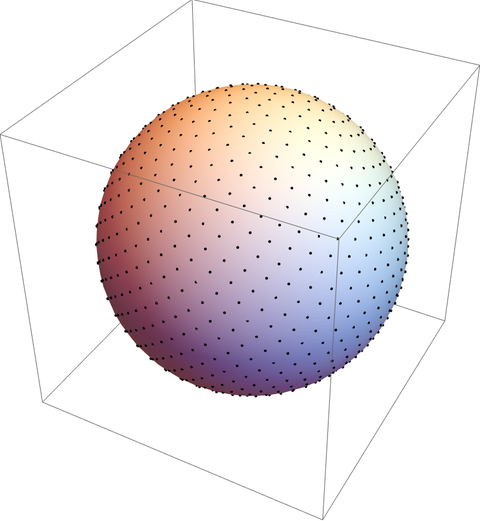Starlink configurations
My nephew recently told me about being on a camping trip and seeing a long line of lights in the sky. The lights turned out to be Starlink satellites. It's fairly common for people report seeing lines of these satellites.

Why would the satellites be in a line? Wouldn't it be much more efficient to spread them out? They do spread out, but they're launched in groups. Satellites released into orbit at the same time initially orbit in a line close together.
It would seem the optimal strategy would be to spread communication satellites out evenly in a sphere. There are several reasons why that is neither desirable or possible. It is not desirable because human population is far from evenly distributed. It's very nice to have some coverage over the least-populated places on earth, such as Antarctica, but there is far more demand for service over the middle latitudes.
It is not possible to evenly distribute more than 20 points on a sphere, and so it would not be possible to spread out thousands of satellites perfectly evenly. However there are ways to arbitrarily many points somewhat evenly, such as in a Fibonacci lattice.

It's also not possible to distribute satellites in a static configuration. Unless a satellite is in geostationary orbit, it will constantly move relative to the earth. One problem with geostationary orbit is that it is at an altitude of 42,000 km. Starlink satellites are in low earth orbit (LEO) between 300 km and 600 km altitude. It is less expensive to put satellites into LEO and there is less latency bouncing signals off satellites closer to the ground.
Satellites orbit at different altitudes, and altitude and velocity are tightly linked. You want satellites orbiting at different altitudes to avoid collisions, they're orbiting at different velocities. Even if you wanted all satellites to orbit at the same altitude, this would require constant maintenance due to various real-world departures from ideal Keplerian conditions. Satellites are going to move around relative to each other whether you want them to or not.
Related postsThe post Starlink configurations first appeared on John D. Cook.